 |
 |
 |
| |
Empagliflozin (SGLT-2) Cuts Liver Fat in People With T2DM and Obese People Without T2DM
|
| |
| |
AASLD 2023 nov 10-14
listen to live session
https://www.aasld.org/the-liver-meeting
Mark Mascolini
Empagliflozin, an SGLT2 inhibitor, lowered liver fat content in people with type 2 diabetes mellitus (T2DM) and in obese individuals without T2DM in a 12-week placebo-controlled trial [1]. Lower weight and improved insulin sensitivity-but not change in plasma glucose-drove the liver fat drop.
Prior work showed that the SGLT2 (sodium glucose cotransporter-2) inhibitors empagliflozin, canagliflozin, and dapagliflozin lower liver fat in people with T2DM and metabolic dysfunction-associated steatotic liver disease (MASLD). Licensed to lower blood glucose in adults with T2DM, SGLT2 inhibitors curb blood sugar by inducing the kidneys to flush sugar from the body in urine [2].
Siham Abdelgani and colleagues from University of Texas Health in San Antonio planned this study to learn whether empagliflozin trims liver fat in people without diabetes as it does in those with diabetes. The study involved 30 people with T2DM and 27 without it. Abdelgani and coworkers randomized them in a 2-to-1 ratio to empagliflozin or placebo for 12 weeks. Study participants could be 18 to 65 years old, had to be in good general health, and had to meet other requirements: stable weight in the preceding 3 months, estimated glomerular filtration rate (eGFR) above 60 mL/min without microalbuminuria, and HbA1c below 8%.
The group with diabetes was significantly younger than the group without diabetes (42 on empagliflozin and 45 on placebo versus 44 on empagliflozin and 55 on placebo, P < 0.05). People with diabetes also had significantly higher fasting plasma glucose (P < 0.0001) and HbA1c (P < 0.0001). The groups did not differ significantly in proportions of women (about 45%), body mass index (about 33 kg/m2), or eGFR (about 98 mL/min). Nor did they differ in percent liver fat (about 12%), numbers with more than 5% liver fat, ALT, or FIB-4.
While liver fat rose about 1% in people with or without diabetes randomized to placebo, with empagliflozin absolute and relative drops in liver fat were about 2.75% and 20% in people with diabetes and 2% and 15% in people without diabetes (P < 0.05 versus placebo). The researchers charted a negative correlation between decrease in liver fat and baseline liver fat in participants with and without diabetes-the greater the baseline liver fat, the greater the drop in liver fat during the study (r = -0.62, P < 0.001). In participants with baseline liver fat above 7%, absolute change in liver fat with empagliflozin measured about 5% in people with or without diabetes, while liver fat changed hardly at all in people with baseline liver fat below 7% (P < 0.05 for difference in people with diabetes; P < 0.01 for difference in people without diabetes).
Simple Pearson's correlation between liver fat change and metabolic parameters in people taking empagliflozin identified significant correlations with weight loss, change in Matsuda index (which "provides a reasonable approximation of whole-body insulin sensitivity from the oral glucose tolerance test" [3]), change in plasma free fatty acids, change in ALT, change in AST-to-platelet ratio index (APRI), change in hepatic glucose production (HGP), and fasting plasma glucagon. Multivariate analysis narrowed the field to two factors that independently predict lower liver fat content: change in body weight (1.78% change rate per standard deviation, P < 0.05) and change in Matsuda index (1.47% change rate per standard deviation, P < 0.05).
Abdelgani and coworkers stressed that the correlation analysis identified decreased body weight and improved insulin sensitivity as drivers of liver fat drops with empagliflozin. But change in plasma glucose-regarded as the key mechanism in controlling diabetes with empagliflozin and other SGLT2 inhibitors-did not play that role in this study population [2].
References
1. Abdelgani S, Clarke G, DeFronzo A, Abdul-Ghani M. Empagliflozin is equally effective in reducing liver fat content in T2DM patients and in nondiabetic individuals. AASLD 2023, The Liver Meeting, November 10-14, 2023, Boston.
2. National Kidney Foundation. Sodium glucose cotransporter-2 (SGLT2) )inhibitors. https://www.kidney.org/atoz/content/sglt2-inhibitors#how-sglt2-inhibitors-work
3. Gutch M, Kumar S, Razi SM, Gupta KK, Gupta A. Assessment of insulin sensitivity/resistance. Indian J Endocrinol Metab. 2015;19:160-164. doi: 10.4103/2230-8210.146874. https://www.ncbi.nlm.nih.gov/pmc/articles/PMC4287763/pdf/IJEM-19-160.pdf
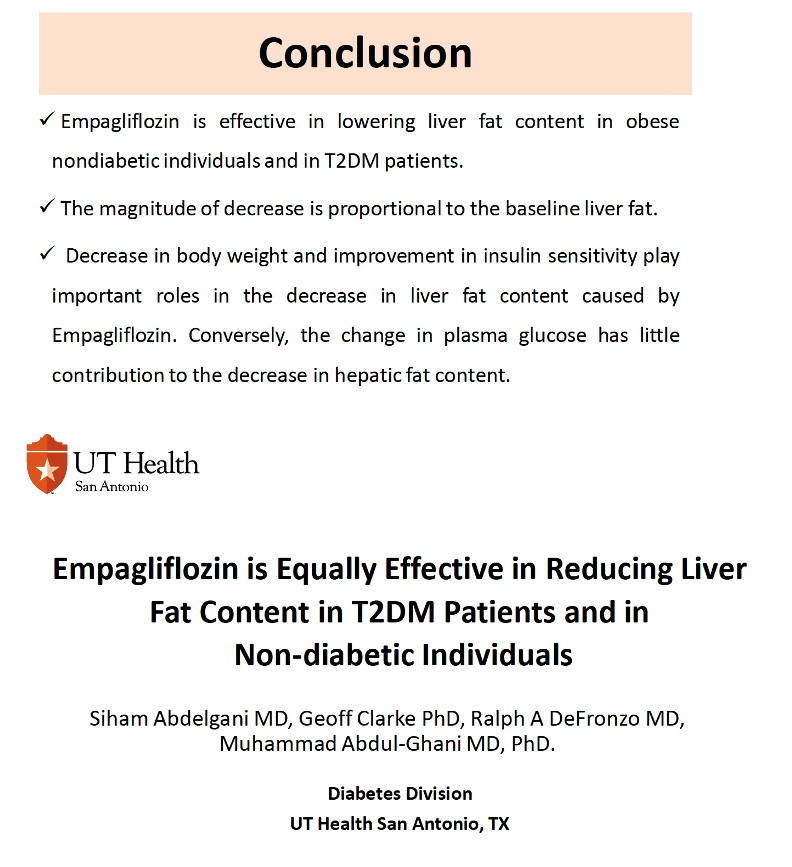
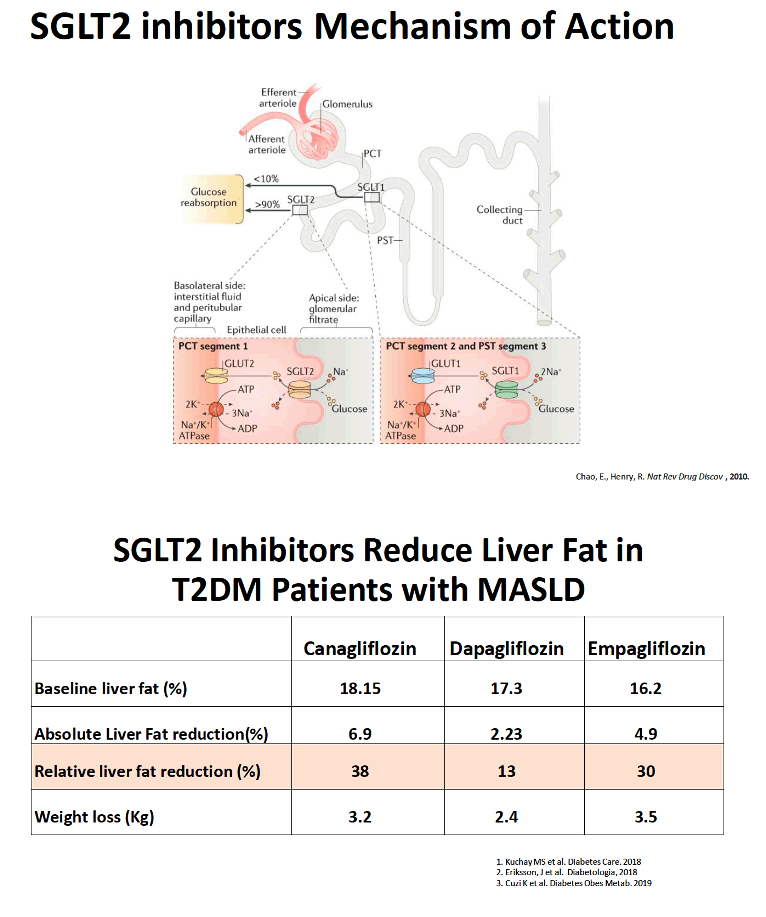

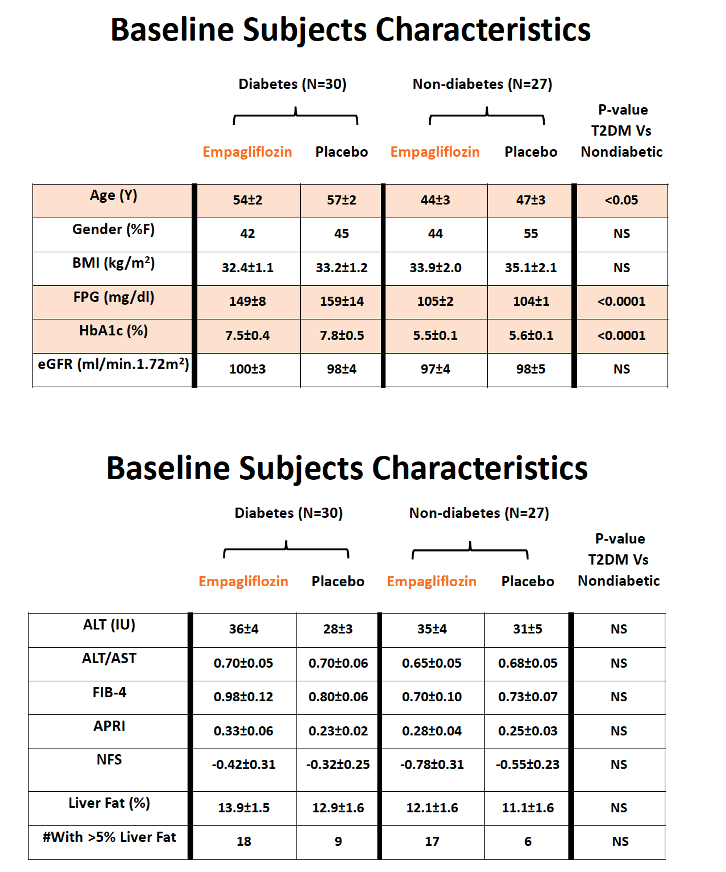
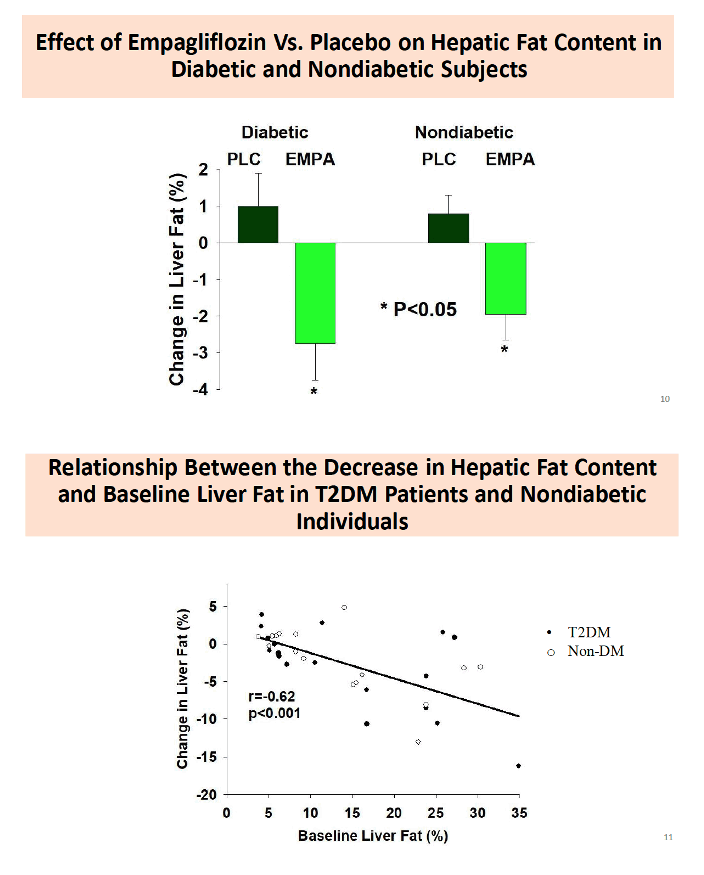
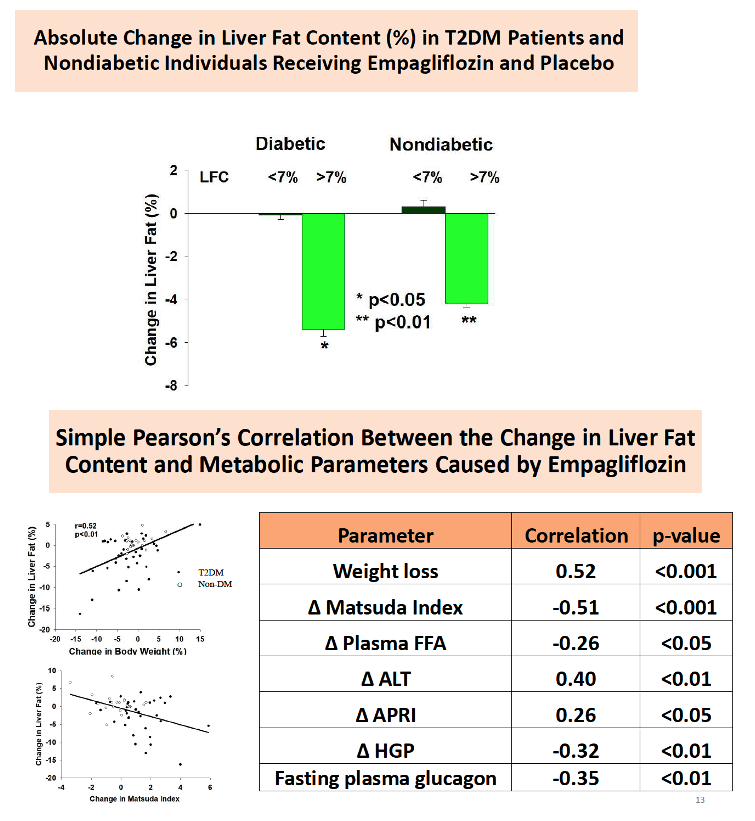
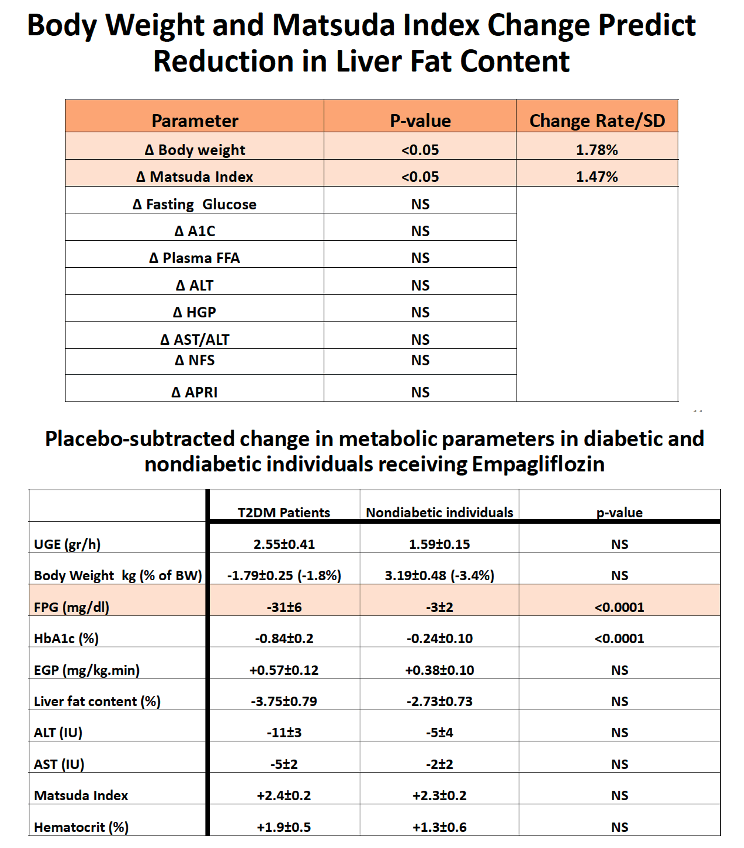
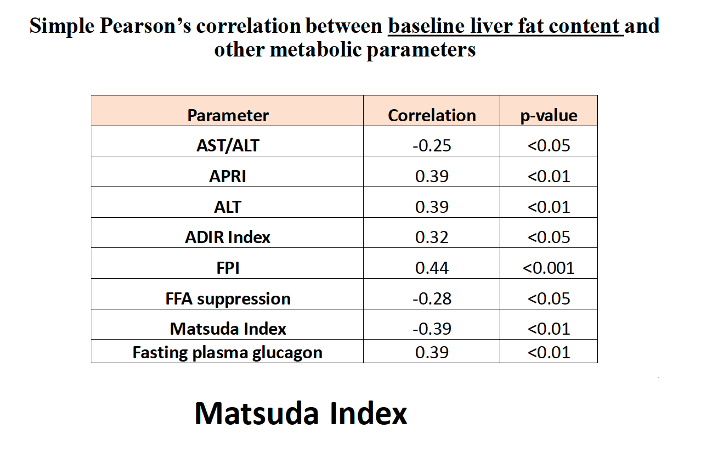
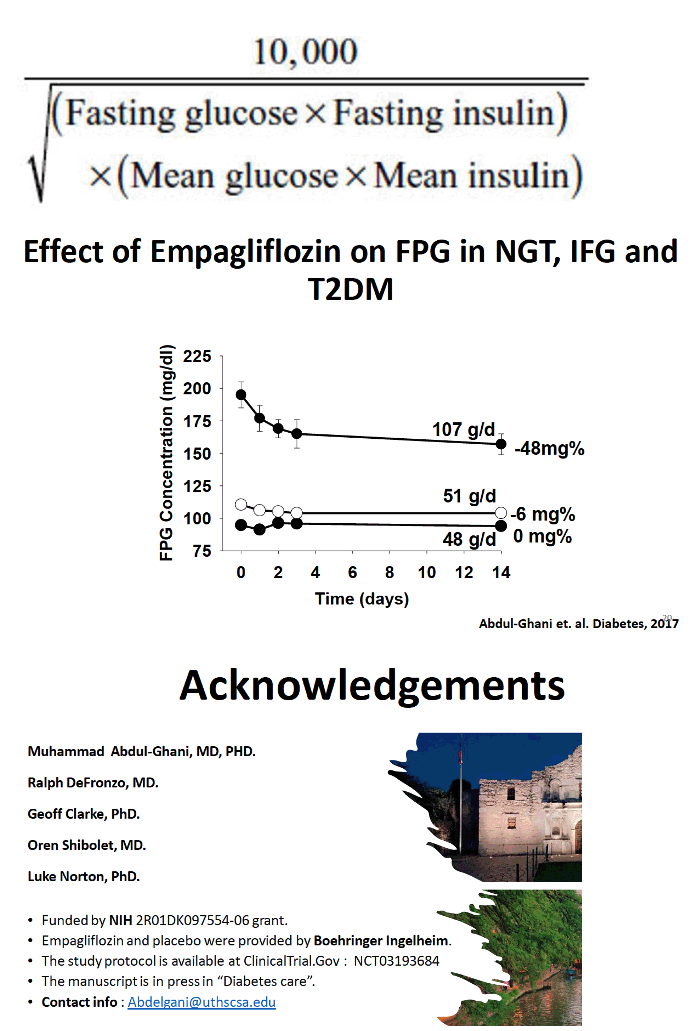
|
| |
|
 |
 |
|
|